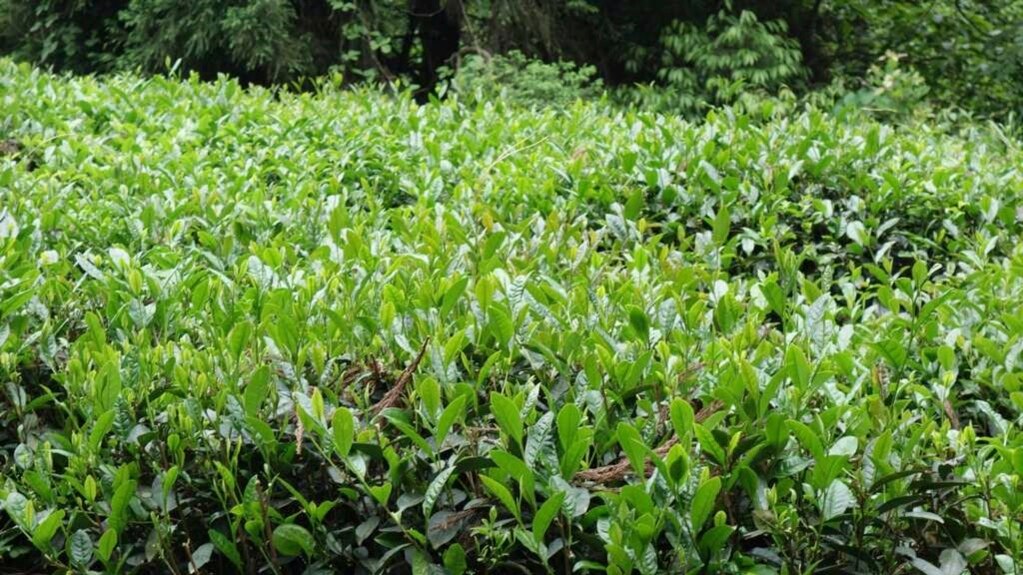People who grow their own food are familiar with planting tomatoes, peppers, squash, herbs, berries and other common fruits and vegetables.
However, they may not think of growing plants for drinks.
Gardening expert Jessica Damiano recently wrote about plants you can grow to make tea. Damiano, who writes for the Associated Press, says that growing your own tea plants in the garden can provide enough leaves and flower buds to keep your tea pot filled year-round.
And the plant to grow, she says, is camellia sinensis (var. sinensis), also known as the “tea plant.”
These evergreen plants are easy to grow in any amount of sunlight, from deep shade to full sun. However, ideal growing conditions are part sun to light shade. They require well-draining soil with a slightly acidic pH.
Young plants will take about two years to produce enough leaves for tea. In five years, one plant should provide enough for an average tea drinker. If you need more tea, Damiano says to plant more camellia sinensis.
Camellia sinensis is called the “tea plant” because white, green, black, and oolong teas all come from this plant. Their differences come from harvesting practices and after-harvest treatments.
For white tea, pick the flower buds before they fully open. Heat the buds in a pan over low heat, moving them often for about 10 minutes. Cool them and store in an airtight container.
For green, black and oolong tea, pick two or three of the youngest leaves from each stem, along with the leaf bud from each stem tip. Do this every 10 to 12 days as new growth develops.
Preparing green, oolong, or black tea all have different processes.
Green tea
For making green tea, briefly steam leaves over boiling water. Then put the leaves on a clean towel and let them sit for five minutes. Roll up the leaves in the towel gently to remove extra water. Remove the leaves from the towel, separate them, and place them on a baking sheet. Heat in an oven or toaster oven set to 148 degrees Celsius (300 degrees Fahrenheit) for 10 to 15 minutes or until the leaves are completely dry. Brew immediately or cool and keep them in an airtight container for future use.
Oolong tea
For making oolong tea, put the leaves in one layer on a baking tray. Put the tray in a sunny outdoor spot to let the leaves wilt. After 30 to 60 minutes, move the tray into the shade and move the leaves every hour for 8 to 10 hours. Next, place the leaves in a wide pan and cook them over low heat for 15 minutes, moving gently as needed to prevent burning. Let the leaves cool. And roll each leaf individually to keep its oils and flavors. They should be completely dry before storing in an airtight container.
Black tea
To make black tea, place leaves on a baking sheet in the sun for 10 to 12 hours to remove only 50 to 75 percent of the water. Then, cut the leaves into long pieces and roll into small balls. Place the balls in a warm room between 25 and 26 degrees Celsius (78 to 80 degrees F) that is not too dry of a room until they turn reddish-black. Then, dry them in an oven at 93 degrees Celsius (200 degrees F) for 5 minutes. Lower heat to 60 degrees C (140 degrees F) and continue drying for an additional hour. Cool and store in an airtight container.
Native to China, camellia sinensis var. sinensis is cold-hardy. That means it can survive in cold weather. However, it may need some protection to survive cold winters.
The same is true for another variety of this flower, camelia sinensis var. assamica. Native to India, this kind is more like a tree.
You will have to research which kinds of camellia sinensis can grow in your area.
On its website, the International Camellia Society gives you suggestions for how to protect these plants during a cold weather.
I’m Anna Matteo. And I’m Andrew Smith.

